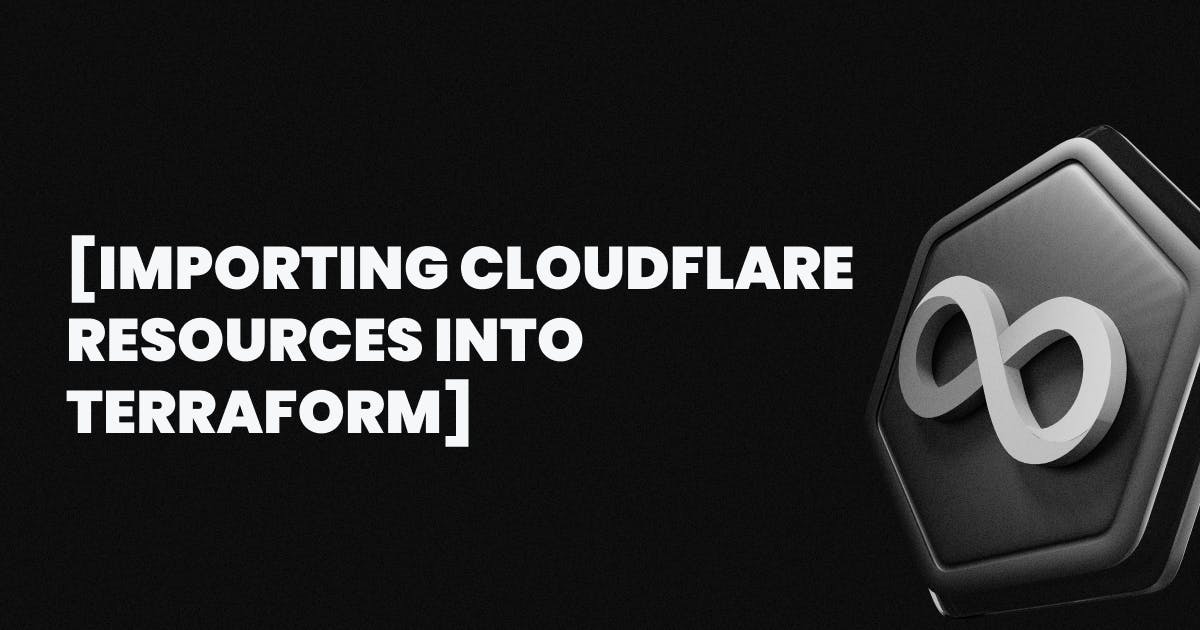In this guide, I'll show how I used cf-terraforming to import Cloudflare resources into Terraform code.
Important note: In the current iteration, I use Terraform primarily as a backup storage mechanism for Cloudflare resources. Management and modifications will continue to be performed manually via the Cloudflare Dashboard, as this approach is generally faster and more efficient.
Setting up access to Cloudflare
Before using Terraform with Cloudflare, users need to configure the appropriate environment variables.
Using an API key
If authenticating through an API Key, export the following environment variables:
export CLOUDFLARE_API_KEY=<EXAMPLE_KEY>
export CLOUDFLARE_EMAIL=<EXAMPLE_EMAIL>
Using an API token
Alternatively, authentication can be done with an API Token by exporting only this variable:
export CLOUDFLARE_API_TOKEN=<EXAMPLE_TOKEN>
Cloudflare's API Token authentication is flexible but requires complex configuration. To simplify the process, we recommend using an API Key associated with a user account. However, use it with caution, as the API Key grants full access to all Cloudflare actions.
To find the Global API Key or to create an API Token, visit Cloudflare API Tokens.
Using cf-terraforming
Cloudflare provides an official tool, cf-terraforming, which can generate Terraform configuration and state from existing resources. This is the recommended approach for automating the import process.
- Tested on
cf-terraformingversion0.23.3. - Not all resources are supported by
cf-terraforming. Find the list of supported resources here. - Be aware that after updating the Cloudflare Terraform provider to version 5.x.x or higher, resource definitions may change.
Step-by-step guide: Importing with cf-terraforming cf-terraforming
1. Initialize the Terraform provider:
To use this tool, initialize the provider. Create a temporary file, e.g., providers.tf, with the following configuration:
terraform {
required_providers {
cloudflare = {
source = "cloudflare/cloudflare"
version = "4.43.0"
}
}
}
provider "cloudflare" {}
Then, initialize Terraform:
terraform init
2. Install cf-terraforming:
brew install cloudflare/cloudflare/cf-terraforming
Or download the release from the GitHub repository.
3. Generate Terraform resource configuration (e.g., for a DNS record):
cf-terraforming generate --resource-type cloudflare_record --zone <ZONE_ID> > generate.tf
Example output:
resource "cloudflare_record" "terraform_managed_resource_<RESOURCE_ID>" {
content = "EXAMPLE_CONTENT"
name = "EXAMPLE_NAME"
proxied = false
ttl = 1
type = "TXT"
zone_id = "<ZONE_ID>"
}
4. Generate Terraform import configuration:
cf-terraforming import --resource-type cloudflare_record --zone <ZONE_ID> --modern-import-block > import.tf
Example output:
import {
to = cloudflare_record.terraform_managed_resource_<RESOURCE_ID>
id = "<ZONE_ID>/<RESOURCE_ID>"
}
5 Apply Terraform configuration:
terraform apply
Key considerations
A crucial aspect of using cf-terraforming is distinguishing between account-level and zone-level resources. Before using cf-terraforming, refer to the supported resources documentation to understand the resource scope.
To streamline the import process, automate cf-terraforming by using a loop to process multiple ZONE_ID values at once.
Important notes
- In this context of using Terraform, the primary goal is backup storage rather than direct resource management.
- If you have a large number of resources, the generated code may become extensive, making navigation and maintenance difficult.
- To keep the Terraform state manageable, consider structuring resources into logical modules instead of creating a single monolithic state.
- We recommend not modifying the automatically generated code. Instead, make changes in the Cloudflare Dashboard and re-import the resources as needed.
By following this approach, you can efficiently back up Cloudflare resources while maintaining a clear and manageable Terraform state.


